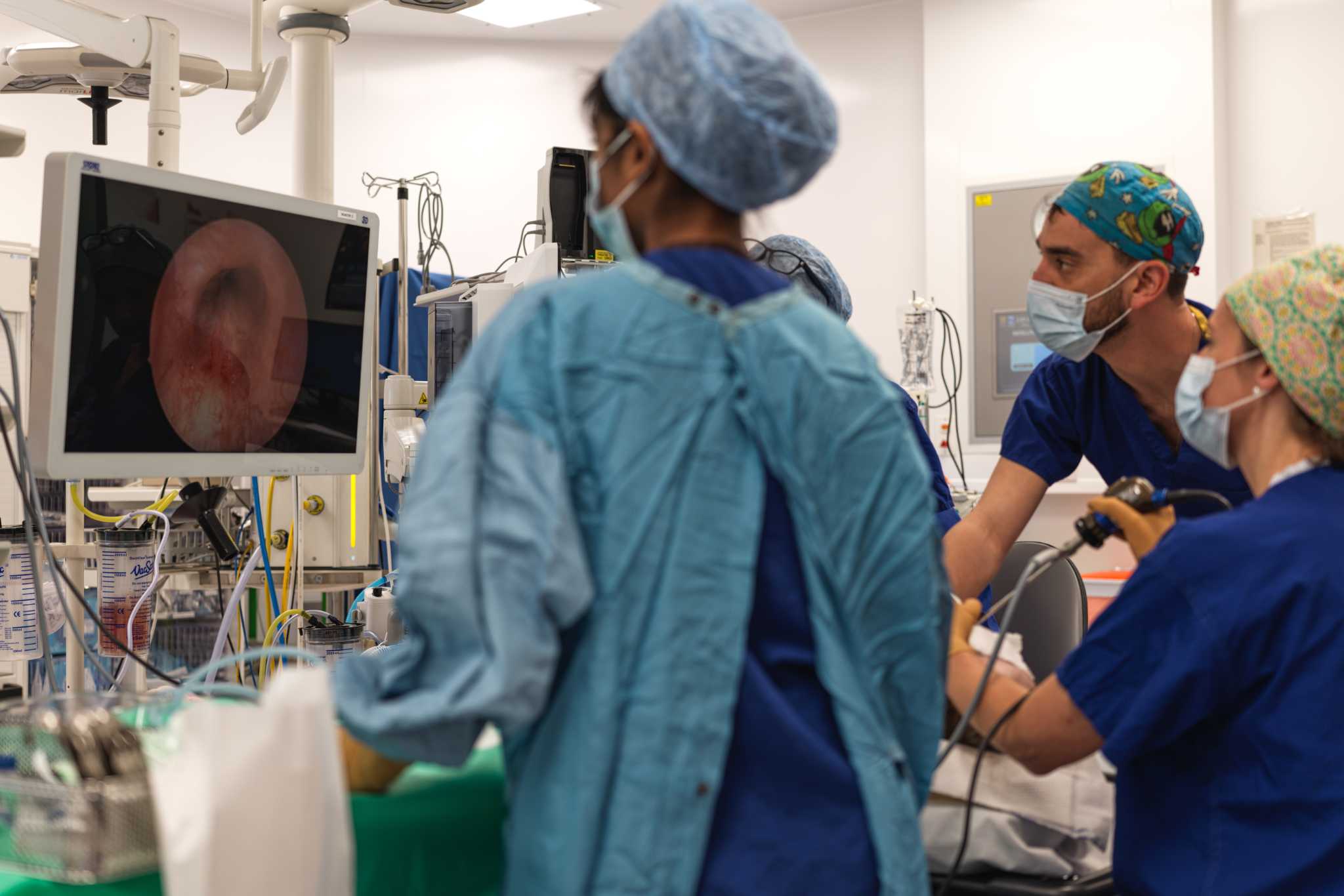
Laryngo-tracheo-bronchoscopy Patient 2
Paediatric ENT SurgeryUse this resource in conjunction with your real-world training

Experience Summary
Laryngo-tracheo-bronchoscopy (LTB) is a critical diagnostic and sometimes therapeutic procedure in the evaluation of paediatric airway disorders. In this 360-degree video, observe the team performing an LTB on a paediatric patient to verify the safety of closing a tracheocutanoeus fistula at a later date.
Clinical Context
A tracheocutanoeus fistula is a persistent opening between the trachea and the skin following prolonged tracheostomy, which may remain open after decannulation, especially in children who had tracheostomies for extended periods or at a very young age. Closure of the fistula is considered when spontaneous healing fails, but only after confirming that the patient’s airway is stable and that upper airway patency is sufficient to sustain breathing post-closure.
LTB provides direct visualisation of the airway from the supraglottis through to the bronchi, enabling the surgical and anaesthetic teams to assess for residual or previously unrecognised airway pathology that could compromise breathing once the fistula is closed. Common concerns include suprastomal granulation tissue, tracheomalacia, subglottic stenosis, vocal cord dysfunction, or tracheal collapse, all of which may remain asymptomatic while the fistula serves as an alternative airway.
The procedure is typically performed under general anaesthesia with spontaneous ventilation to preserve natural airway dynamics. Maintaining spontaneous breathing is crucial for assessing dynamic airway conditions like tracheomalacia, which may worsen once the tracheostomy is closed. The team must be prepared for potential airway obstruction or respiratory compromise during the procedure, particularly in children with a history of complex airway disease or prolonged tracheostomy dependence.
Preoperative planning involves a multidisciplinary team, including ENT surgeons, anaesthetists, and paediatricians. A detailed review of the patient’s airway history, previous imaging, and current respiratory status is vital. The goal of the LTB is to ensure that the patient can ventilate and oxygenate effectively through the natural upper airway, with no critical obstruction or airway instability that would render fistula closure unsafe.
Intraoperative findings may lead to decisions to delay closure, perform further interventions (e.g. debulking of granulation tissue or airway dilatation), or proceed with closure if the airway is deemed patent and functional. Post-procedure, patients are monitored for any signs of respiratory compromise.
Learning Objectives
- Understand the procedural steps for LTB
- Understand the equipment required for LTB
- Understand the steps for assessing the airway in an LTB
